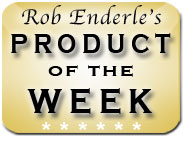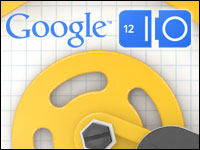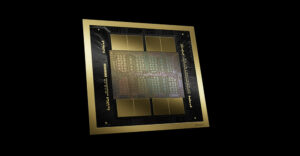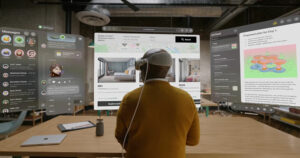
The iPad is an interesting product. It is basically a light Mac netbook lacking a keyboard but with touch. Had any other company brought this to market, it probably wouldn’t have sold.
The most successful product in its class that isn’t an iPad is the Samsung Galaxy tablet, and it so close to an iPad that a judge just concluded it’s an illegal copy. There isn’t a tablet market — there is an iPad market.
However the Kindle Fire has also been very successful, at least in the fourth quarter of last year, and it is smaller, lighter, and far cheaper than an iPad. It is so different, Apple doesn’t even really consider it a competitor. While it is equally easy to use and it is also focused on media consumption, Apple clearly thinks it is going after a different customer. But is it?
The new Nexus 7 is about the same size and price as the Kindle Fire. It has a screen that is similar to the iPad Retina display and the full Google tool set, which was modeled after — and in some unique ways, is superior to — the iPad.
But is Apple right, and are Google and Amazon fighting for a market it doesn’t care about? Or is it a case of Apple not being able to handle the truth: that a US$200 product can truly be better than its gold standard iPad?
I’ll close with my product of the week which has to be the Nexus 7.
10-Inch vs. 7-Inch
Now I don’t carry an iPad, and while I have several Android 10-inch tablets, I don’t carry them either. I carry a Kindle Fire. This is because I don’t spend my time browsing the Web or working on the device — I use it to read, watch movies or TV, and occasionally shop on Amazon.
A 7-inch tablet fits in my jacket pocket, easily cohabits with my laptop in my backpack, and I only occasionally have a coronary because I’ve forgotten to charge it up. I tried carrying a 10-inch product, but it is too big to pocket. Also, I noticed the extra weight, particularly when standing and reading, and I rarely found the size to be an advantage.
Now most folks look at a 7-inch product and see something that is too big to pocket (certainly too big for a pants pocket) or to use as a phone, and too small to use for much of anything else. However, that wasn’t my experience, and several million co-Kindle owners likely agree with me.
The iPad, however, has tens of millions of people who currently don’t. I’ll bet that a large portion of one of these two groups would be happier with the other size product — and that is what Google is going to explore.
Nexus 7
The Nexus 7, for the same money as the Kindle Fire, is a much more complete tablet. It should be — it is a generation newer. It has a Retina-like display, it has a huge number of available applications, it will run most of the major TV- and movie-streaming clients, it will run a Kindle reader (though not as well as the Kindle does), and it is tied to a variety of music properties including Google music, which seems to do a better job than iTunes at organizing and syncing all of your music across all of your devices.
Like the Kindle Fire, it is light — and like the Fire, it is $200. Now this last is more important than you think in the fourth quarter. This is because during the holidays, products like this are given for gifts, and parents and grandparents like to treat children and grandchildren equally. This means if there are five kids, all five need to get similar presents — and more than one present, so they aren’t sitting around pouting while everyone else opens gifts.
At $200, you can buy five Nexus 7s for less than two configured iPads. That is a massive difference. It is the difference between seeing a smiling face of happiness and frowns of disappointment — or being able to look at your January credit card bill with a mere grimace rather than having a full-on coronary. That price is going to play a big role this Christmas — much like the price on the Kindle Fire played last Christmas.
Kindle Fire
However, we shouldn’t discount the Kindle Fire, which is due for a refresh this holiday season. It will be one of two wild cards that could also shift business away from Apple and the iPad, as it too is expected to get a better display and improved battery life.
Amazon also has a year of additional experience with the Kindle Fire and gets the additional revenue from folks like me who use the device to shop. It is a virtual storefront to Amazon’s various on-line properties, suggesting that Amazon could more aggressively subsidize it and price it under the Nexus 7 profitably.
You’d then have what amounts to a price war in the $100 to $200 range, and far fewer folks would even be interested in devices that cost more than $500, and that would be problematic for Apple. You may recall it started out in that price range with the iPhone but eventually was forced to drop down into the high end of the vastly more popular $100 to $200 range.
Wrapping Up: Surface Tablet
I spoke of the Surface tablet last week, but it is the other wild card. It also comes in at the stratified $500 price range, but it could share the downside with Apple of a market that has reset at $200. It would be ironic if Apple and Microsoft collaborated to jointly move against these lower-cost offerings — remember, these firms have combined against common threats in the past.
It wouldn’t surprise me to find that the two firms put aside their differences and decided to at least go after the Google threat together, and given Amazon already licenses from Microsoft, finding another way out of that competition might also result in a creative collaboration.
In the end, we are likely to see the battle of all battles between Amazon, Apple, Google and Microsoft in this tablet struggle of the decade. 1, 2, 3, 4, I call a TABLET WAR!! Let the games begin!
Product of the Week: Nexus 7

This is actually a nice piece of work, built by Asus, which has been cropping up as a very aggressive and innovative OEM of late. The Nexus 7 at $200 is a pretty impressive piece of hardware, and this from a died-in-the-wool Kindle Fire user.
Google has improved the software experience with the Android platform solidly over the last few versions, going from barely tolerable to pretty usable over time. This latest version is clearly the best yet with a clean entry screen, and since I’ve been getting used to Android over time, I’m now finding the experience less jarring.

The Nexus 7 uses the Nvidia Tegra 3 platform, which is arguably the most powerful and popular on tablets, and the only one capable of giving Apple’s impressive latest offering a run for the money.
Note — this is what the ARM version of the Microsoft Surface Tablet will be running as well. It should beat the iPad with a rich gaming experience if it can get some impressive titles — Microsoft demoed a nice one at its launch event.
With a Retina like display, decent near-10-hour battery life, strong performance, and an aggressive price, the Nexus 7 likely gives us an early look at what the next Kindle Fire will bring to the table. While it isn’t shipping yet, this latest offing from Google is giving both Amazon and Apple a run for the money, and competition is a good thing, so the Nexus 7 is my product of the week!























































